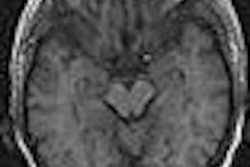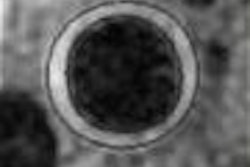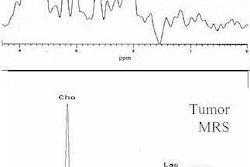The better signal-to-noise ratio (SNR) one obtains in moving from a 1.5-tesla to 3-tesla MR scanner apparently doesn't translate into improved detection of coronary stenoses by magnetic resonance angiography.
That is the finding of a newly published study that is the first to directly compare the accuracy of 1.5-tesla and 3-tesla images from the same patients to the gold standard of conventional angiography (Radiology, March 2005, Vol. 234:3, pp. 718–725).
Eighteen consecutive patients with suspected coronary artery disease who were scheduled to undergo elective conventional angiography were enrolled in the prospective study, led by radiologist Dr. Torsten Sommer from the University of Bonn in Germany.
The 1.5-tesla and 3-tesla MR examinations were performed in a random order within 24 hours of each other; conventional angiography was performed up to three weeks later.
Both the 1.5-tesla and 3-tesla scanners were manufactured by Philips Medical Systems (Andover, MA) and were equipped with identical gradient systems (maximal gradient amplitude, 30 mT; slew rate, 150 T/m/sec).
A body coil was used at both field strengths: the maximum field-of-view at 3 tesla was 530 mm in the left-right and anteroposterior directions and 400 mm in the craniocaudal direction; the maximum field-of-view at 1.5 tesla was 530 mm in the left-right and anteroposterior directions and 480 mm in the craniocaudal direction.
The investigators used a free-breathing navigator-based 3D k-space segmented coronary MR angiography technique with high spatial and temporal resolution at both field strengths, as well as special prepulses for fat suppression and myocardial signal. "This approach enabled the use of a short echo time, which is expected to reduce susceptibility distortions related to T2* effects in high field strength MR imaging," the authors noted.
At conventional angiography, 11 of the 18 patients were found to have clinically significant coronary artery disease. The 3-tesla and 1.5-tesla MR angiography achieved nearly identical results when compared to the conventional standard: both achieved 82% sensitivity, and 3-tesla gained an insignificant 1% in specificity (89% versus 88%) and accuracy (88% versus 87%).
The researchers did find "a moderate but highly significant increase in SNR at 3.0 T compared with the SNR at 1.5 T (p < 0.001); this increase was 29.5% for the LCA and 31.2% for the RCA."
Also, the SNR gain at 3.0 tesla resulted in a significantly higher contrast-to-noise ratio (CNR) between blood and myocardium in the left coronary artery (21.8% increase over 1.5 tesla) and in the right coronary artery (23.5% increase).
But those measured increases in SNR and CNR clearly didn't lead to improved accuracy in detecting stenoses.
"We hypothesize that the observed gain in SNR and CNR at 3.0 T may be too small to result in significantly improved depiction of coronary artery stenoses because other effects influencing image quality, including the efficiency of suppression of intrinsic and extrinsic motion artifacts, are dominant factors," the authors concluded.
By Tracie L.
Thompson
AuntMinnie.com staff writer
March 11, 2005
Related Reading
3-tesla MR enhances, and likely advances, orthopedic imaging, February 22, 2005
The 3-tesla MRI swap: Why it's not a simple upgrade, January 27, 2005
3D contrast MRA may be optimal for evaluating aortic dissection, December 30, 2004
For now, MRI edges CT in coronary angio race, December 20, 2004
Copyright © 2005 AuntMinnie.com



















